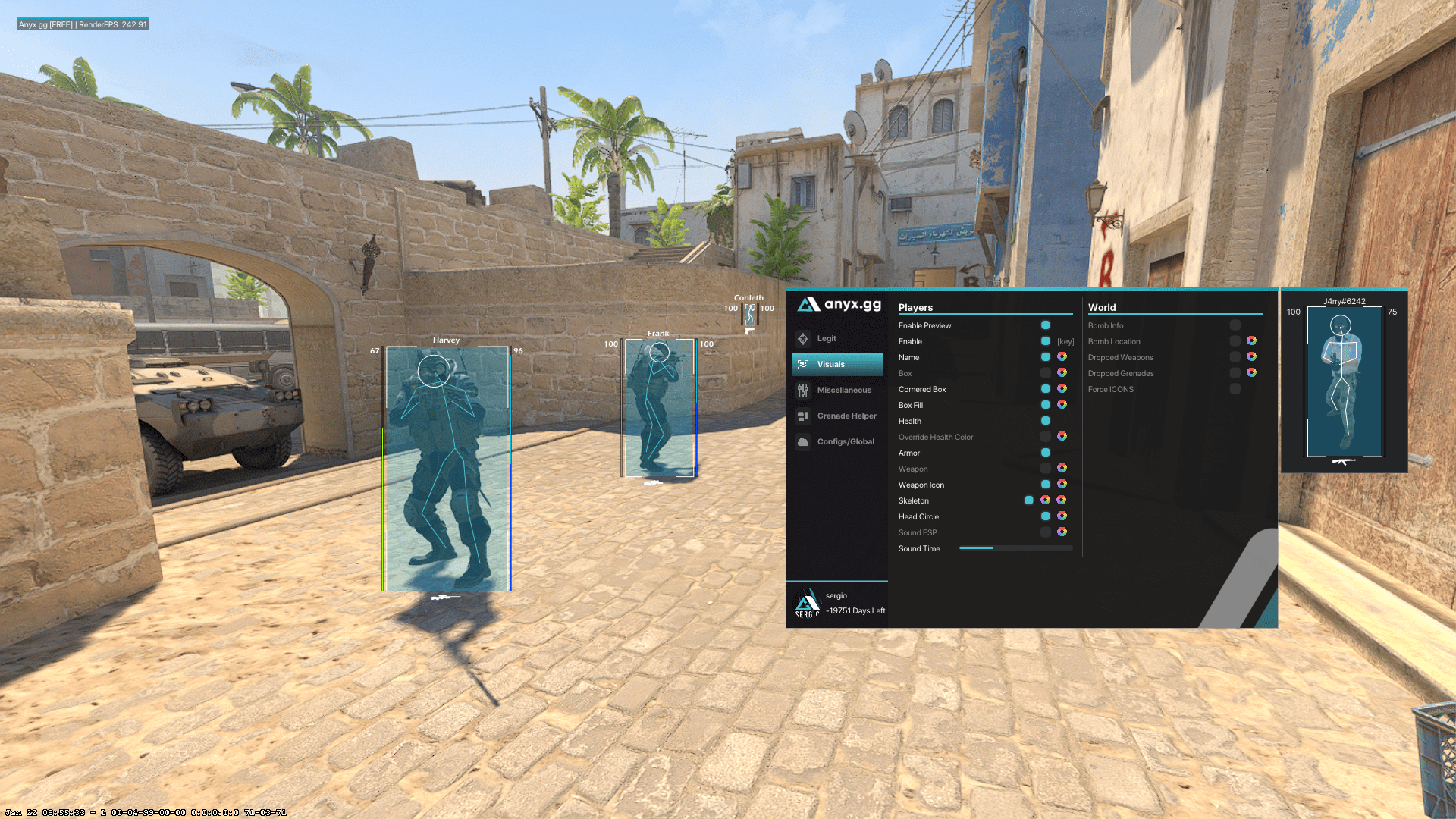The gaming world has come a long way, with multiplayer games like Counter-Strike 2 (CS2) standing as a testament to the growth of competitive eSports and online gaming. These games test players’ skills, strategy, and teamwork. However, the rise of cheats, including wallhacks, has created a major ethical debate in the community. Wallhacks provide players with the ability to see opponents through walls and other obstacles, giving them a significant unfair advantage. This article explores the ethics and impact of using CS2 Wallhacks in multiplayer matches.
While wallhacks might seem like an appealing shortcut for players looking to climb ranks or win matches, their usage raises concerns about fair play and the integrity of the gaming environment. These cheats are widely available through various sources online, such as websites promoting CS2 Wallhacks. Despite their accessibility, their use is frowned upon by gaming communities and developers alike.
What Are CS2 Wallhacks and How Do They Work?
Wallhacks are a form of cheat that manipulates the game’s visual rendering. They allow players to see opponents, items, or objectives through walls and obstacles, removing the element of surprise and eliminating strategic depth. In CS2, where map knowledge and positional awareness are key, wallhacks give players an unprecedented ability to track enemy movements and pre-aim before an engagement.
These cheats are typically achieved by altering the game’s software or injecting third-party tools into the game client. Some wallhacks highlight enemies with glowing outlines, while others render walls transparent to reveal everything on the map. This level of control creates a significant imbalance in multiplayer matches, frustrating legitimate players who rely on skill and strategy.
The Ethical Dilemma of Using Wallhacks
The ethics of using wallhacks are a highly debated topic in the gaming community. On the one hand, cheaters argue that using these tools levels the playing field in environments where other players might also be cheating. On the other hand, the majority of gamers view wallhacks as a blatant violation of the principles of fair play.
Gaming is, at its core, about the pursuit of mastery. Players improve their skills through practice, learning map layouts, perfecting their aim, and working together as a team. Wallhacks strip away this process, replacing it with an artificial advantage that undermines the time and effort legitimate players invest in improving. This creates resentment and diminishes the sense of accomplishment for all players involved.
Moreover, using wallhacks damages the integrity of the gaming community. Multiplayer games thrive on trust—players trust that their opponents and teammates are adhering to the same rules. When that trust is broken, it leads to a toxic environment where suspicion and frustration overshadow the fun and camaraderie of gaming.
The Impact of Wallhacks on Multiplayer Matches
The effects of wallhacks on multiplayer matches are far-reaching. Cheaters disrupt the flow of matches, turning what should be a battle of skill and strategy into an uneven contest. Players using wallhacks can predict enemy movements, pre-fire through walls, and dominate games without relying on actual ability.
This creates a ripple effect across the player base. Legitimate players who encounter cheaters often feel demoralized and may lose interest in the game altogether. This loss of players can have long-term consequences for the game’s community and its reputation. Developers also face challenges as they work to combat cheats through anti-cheat systems and software updates, which require significant time and resources.
Why Developers and Communities Condemn Wallhacks
Game developers invest heavily in anti-cheat measures to ensure fair play in multiplayer environments. Tools like Valve Anti-Cheat (VAC) are designed to detect and ban players using cheats like wallhacks. These bans can result in permanent loss of accounts, purchased skins, and other in-game assets.
Beyond technical measures, gaming communities play a crucial role in maintaining fair play. Reporting systems allow players to flag suspected cheaters, and forums serve as platforms to discuss the ethical implications of cheating. The overwhelming consensus among both developers and players is that wallhacks have no place in competitive gaming.
Choosing Fair Play Over Shortcuts
While the temptation to use cheats like wallhacks might be strong, especially for players struggling to improve, the long-term consequences outweigh any short-term gains. Cheating undermines not only the game but also the player’s own sense of accomplishment. Instead of relying on unfair advantages, players should focus on honing their skills through practice, watching tutorials, and learning from experienced players.
Conclusion
The use of CS2 Wallhacks in multiplayer matches is a contentious issue that raises serious ethical questions. While these cheats may offer a competitive edge, they come at the cost of fair play, community trust, and personal integrity. For a game like CS2, which thrives on strategy, teamwork, and skill, wallhacks threaten the very foundation of what makes it enjoyable. The gaming community must continue to promote fair play and discourage the use of cheats to ensure that everyone can enjoy a balanced and rewarding gaming experience.
